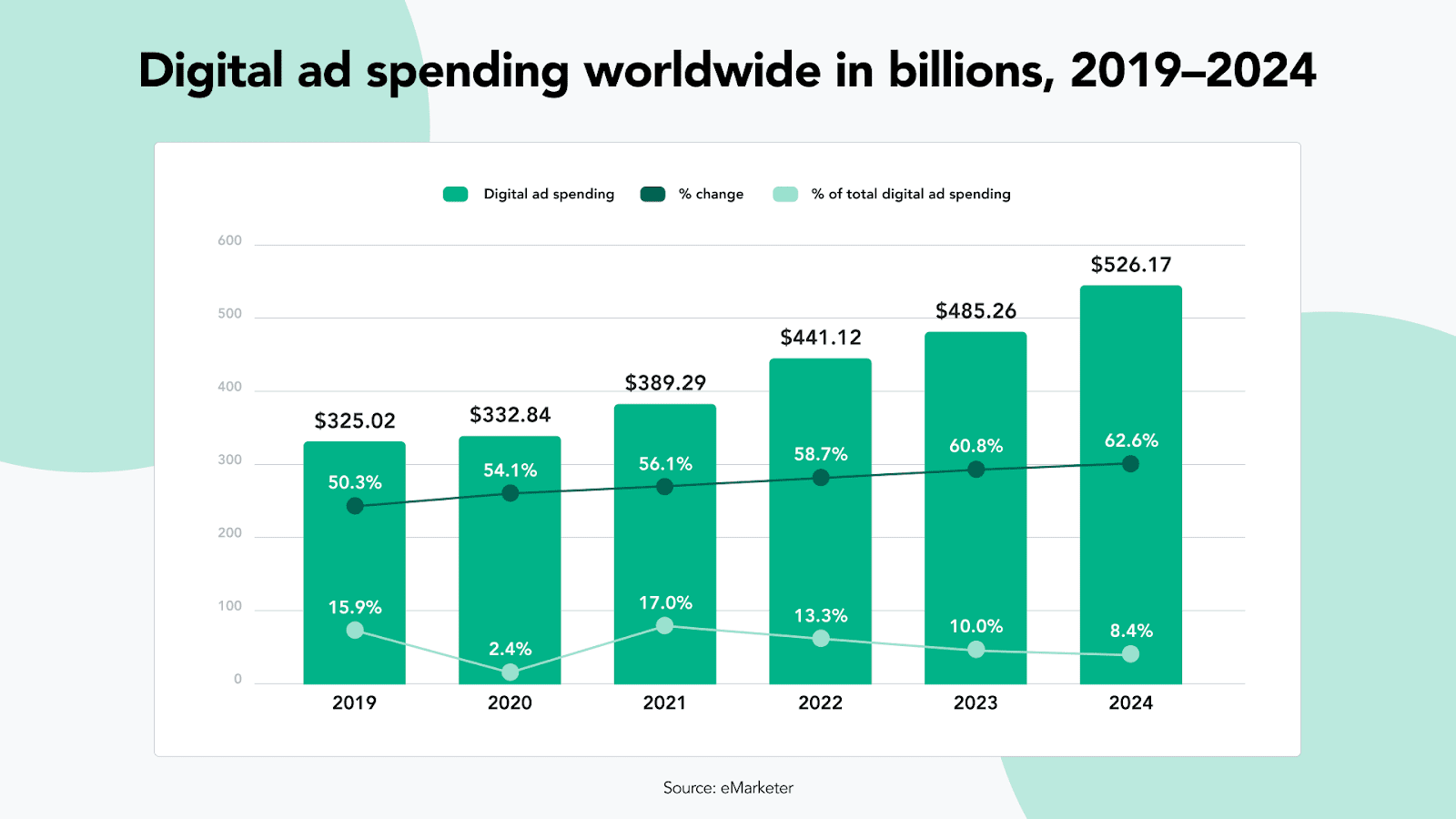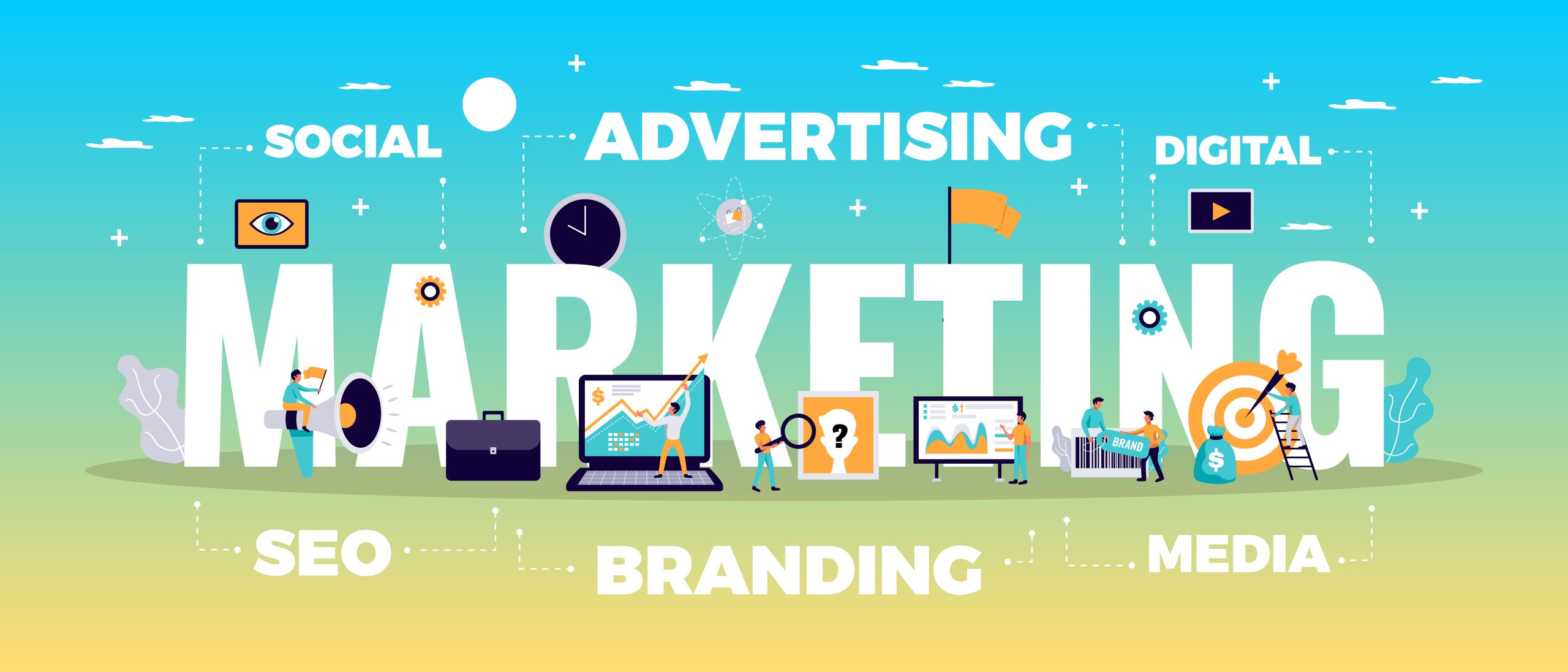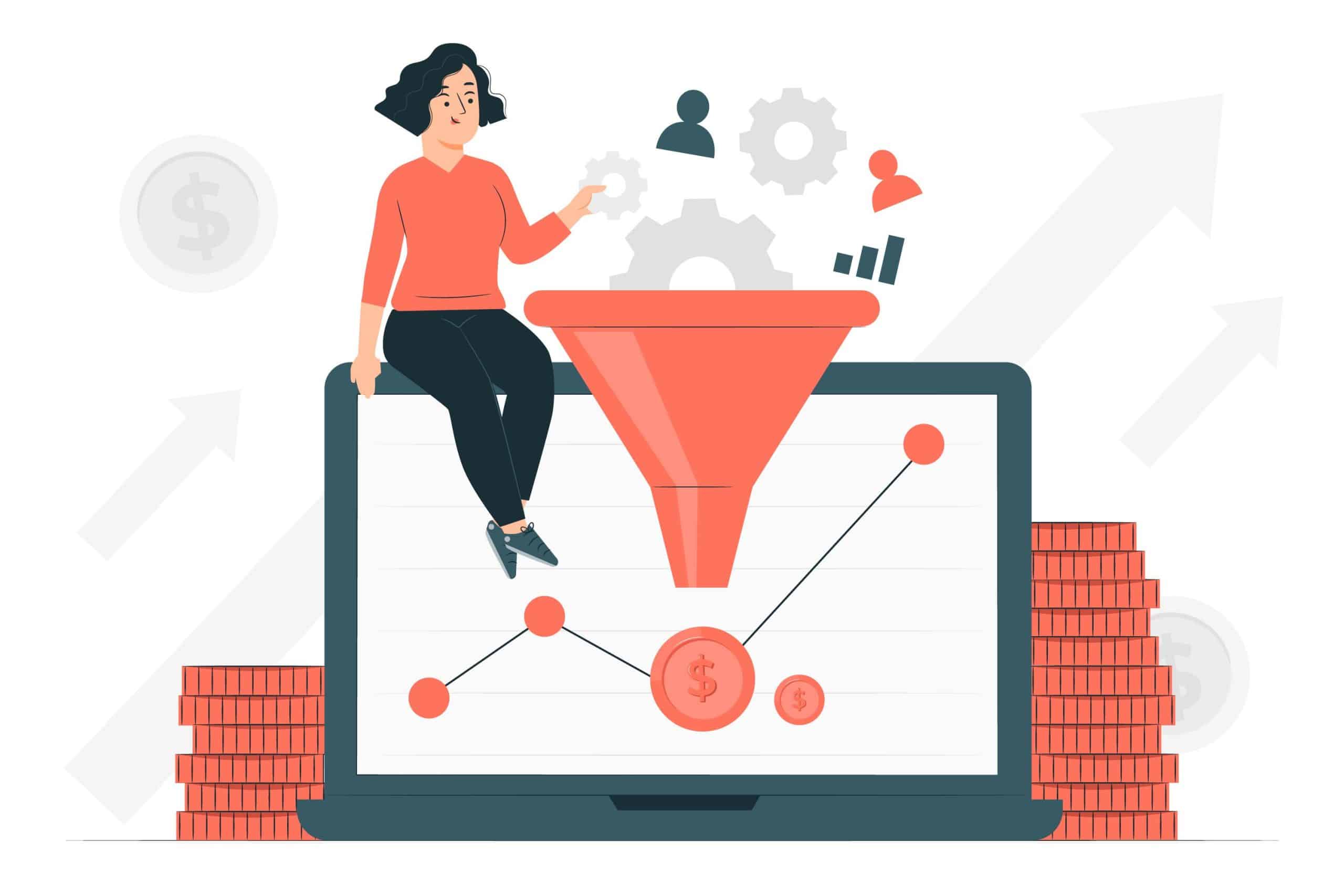
In the ever-evolving world of digital marketing, staying ahead of the game is crucial for businesses to thrive. As we approach 2024, it’s more important than ever to be aware of the key digital marketing statistics that will shape the landscape and drive success. From the rise in voice search to the increasing role of social media influencers, understanding these trends can give you a competitive edge and help you make informed decisions for your marketing strategies.
In this article, we will dive into the key digital marketing statistics you need to know for 2024. We’ll explore the latest data on consumer behavior, emerging technologies, and the changing dynamics of the online marketplace. By arming yourself with these insights, you can make strategic moves to enhance your brand’s visibility, engage with your target audience, and ultimately drive conversions.
From search engine optimization (SEO) to content marketing and social media advertising, this article will provide you with the crucial information you need to stay ahead in the digital marketing game. So, get ready to level up your strategies and embrace the trends that will shape the future of marketing.
Importance of staying updated with digital marketing statistics
The digital marketing landscape is constantly evolving, and it’s essential to stay updated with the latest statistics to ensure your strategies are effective. By keeping a pulse on the industry trends, you can make data-driven decisions that resonate with your target audience and drive results.
One of the key reasons to stay updated with digital marketing statistics is to gain insights into consumer behavior. Understanding how consumers interact with digital platforms, what drives their purchasing decisions, and how their preferences are changing can help you tailor your marketing efforts to meet their needs.
Furthermore, digital marketing statistics can inform your budget allocation. By knowing which channels are most effective and where your target audience spends their time online, you can optimize your marketing budget to maximize ROI.
Lastly, staying updated with digital marketing statistics allows you to stay ahead of your competition. By embracing emerging trends and technologies, you can differentiate your brand and engage with your audience in new and innovative ways.
Trends in social media usage and engagement
Social media has revolutionized the way businesses connect with their audience, and its importance will only continue to grow in 2024. Understanding the latest social media statistics can help you leverage these platforms to maximize your brand’s visibility and engagement.
According to recent data, the average daily time spent on social media is projected to increase to over 2.5 hours per day in 2024. This highlights the need for businesses to have a strong presence on social media platforms to capture their audience’s attention.
Additionally, social media influencers will play a significant role in digital marketing strategies. In 2024, it is estimated that influencer marketing budgets will increase by 65%, indicating the growing influence of these individuals in shaping consumer purchasing decisions.
Mobile marketing statistics and implications
With the increasing use of smartphones, mobile marketing has become a crucial aspect of any digital marketing strategy. Understanding mobile marketing statistics can help you optimize your campaigns for mobile devices and reach your target audience effectively.
Recent data suggests that over 90% of internet users access the web through their mobile devices. This emphasizes the need for mobile-friendly websites and responsive design to provide a seamless user experience.
Furthermore, mobile advertising spending is expected to reach new heights in 2024, with a projected increase of 45%. This highlights the growing importance of mobile ads in reaching and engaging with your target audience.
Video marketing statistics and the rise of video content
Video marketing has gained significant traction in recent years, and its popularity will continue to rise in 2024. Understanding video marketing statistics can help you harness the power of video content to engage with your audience and drive conversions.
Recent studies indicate that videos are the preferred form of content for consumers, with over 85% of internet users watching online videos on a monthly basis. This presents a massive opportunity for brands to create compelling video content that resonates with their target audience.
Furthermore, live video streaming is projected to grow by 99% in 2024. This trend opens up new possibilities for brands to engage with their audience in real-time, fostering authentic connections and driving engagement.
SEO and organic search statistics
Search engine optimization (SEO) is the backbone of any successful digital marketing strategy. Staying up to date with SEO and organic search statistics can help you optimize your website and content for better visibility and higher rankings in search engine results pages.
Recent data suggests that organic search drives over 50% of website traffic, highlighting the importance of ranking well in search engine results. Furthermore, voice search is rapidly gaining popularity, with 50% of all searches expected to be voice-based by 2024. Optimizing your content for voice search can help you stay ahead of this emerging trend and capture the growing voice search market.
Email marketing statistics and the power of personalized campaigns
Despite the rise of social media and other digital marketing channels, email marketing remains a powerful tool for engaging with your audience. Understanding email marketing statistics can help you craft effective campaigns that resonate with your subscribers.
Recent studies show that personalized email campaigns have a significantly higher open rate and click-through rate compared to generic emails. In fact, personalized emails generate 6 times higher transaction rates, emphasizing the power of personalization in email marketing.
Furthermore, email marketing automation is expected to see a 27% increase in usage in 2024. This automation allows you to deliver targeted and timely messages to your subscribers, resulting in better engagement and higher conversion rates.
The impact of voice search and smart devices
The rise of voice search and smart devices is reshaping the way consumers interact with digital platforms. Understanding the impact of voice search and smart devices can help you optimize your digital marketing strategies for this emerging trend.
Recent data suggests that 40% of adults now use voice search at least once per day. This indicates the growing popularity of voice-activated devices like smart speakers and voice assistants. Optimizing your website and content for voice search can help you capture this growing segment of the market.
Additionally, the adoption of smart devices is expected to reach new heights in 2024, with a projected increase of 33%. This presents opportunities for businesses to leverage smart devices to deliver personalized and interactive experiences to their audience.
The Power of Voice Search
Voice search has been steadily growing in popularity over the past few years, and it’s set to become even more prevalent in 2024. According to recent studies, it is estimated that by 2024, voice-based searches will account for nearly 50% of all online searches. This means that businesses need to optimize their websites and content for voice search to ensure they remain visible to their target audience.
One of the key differences between voice search and traditional text-based search is the conversational nature of voice queries. People tend to use more natural language when speaking to voice assistants, which means that businesses need to focus on creating content that answers specific questions in a conversational tone. This can be achieved by incorporating long-tail keywords and phrases that are more likely to be used in voice search queries.
Another important aspect of voice search optimization is ensuring that your website is mobile-friendly. As most voice searches are conducted on mobile devices, having a responsive website that loads quickly and provides a seamless user experience is essential. Additionally, businesses should consider creating content that is easily scannable and digestible, as voice search results often provide concise answers.
Global digital ad spend will increase 8.4% in 2024, reaching over $526 billion. To cut through the noise and stand out, marketers need to be nimble and strategic in this fast-changing environment. (Source: eMarketer)
The average cost per action (CPA) is $49 for paid search and $75 for display ads. These numbers help illustrate how competitive digital advertising can be for many industries. The stakes for digital have never been higher, and neither has the pressure on marketers and agencies to optimize campaign performance to win more customers at lower costs. (Source: WordStream)
US social media ad spend reached $72.3 billion in 2023. This was a 9% increase from 2022 (Source: Statista)
In 2023, US Facebook ad spend exceeded $50 billion. This is down from $58 billion spent in 2022. (Source: Statista)
In 2023, US businesses spent $5.9 billion on LinkedIn ads. This is a 13% growth in ad spend from 2022. LinkedIn has become a staple advertising channel for B2B marketers. (Source: Statista)
Mobile display ad spend is projected to reach $362 billion by the end of 2023. The mobile ad market is set to skyrocket 51% when compared to 2020. (Source: Statista)
Many Marketers Are Using Ineffective Strategies
Only 61% of marketers believe their marketing strategy is effective. Even though most marketers doubt their strategies, they’re still pouring massive spend into digital advertising. Sounds a bit illogical when you put it that way, doesn’t it? (Source: HubSpot)
40% of marketers say proving the ROI of their marketing activities is a top marketing challenge. Despite allocating large portions of their budgets to digital ads, many digital marketers are unable to fully gauge their results. (Source: HubSpot)
58% of marketers are challenged with targeting or segmenting their audience. Many marketers are unable to tap into all the rich first-party sources at their fingertips — this leaves them unable to personalize consumer experiences. (Source: Forrester)
57% of marketers are challenged with optimizing next-best-action marketing decisions. Marketers also lack the data they need to guide consumers through the funnel after their initial brand engagement. (Source: Forrester)
80% of marketers report their lead generation efforts are only slightly or somewhat effective. Lead generation is another challenge for digital marketers — especially when they fail to track and optimize every phase of the customer journey. (Source: BrightTALK)
22% of businesses are satisfied with their conversion rates. Driving leads is only half the battle — in many cases, leads can fall through if sales agents aren’t fully equipped to handle them. Conversation intelligence tools can help sales teams get visibility into every contact center interaction and discover opportunities to drive more revenue. (Source: Econsultancy)
42% of B2B marketing professionals state that a lack of quality data is their biggest barrier to lead generation. The modern customer experience is fragmented across many channels, making it difficult to get a full view of the customer journey. With high-quality call tracking data that ties the customer journey together, marketers can make smarter optimizations. (Source: BrightTALK)
Marketers Are Turning to AI to Gain a Competitive Edge
Nearly 100% of marketers surveyed believe AI will have some sort of positive impact on their organizations. Mark your calendars for the AI revolution — marketers are betting it will supercharge their organizations, leaving those hesitant behind in the dust. (Source: Invoca: The State of AI in Digital Marketing Report)
About 90% of marketers surveyed are optimistic about the future of AI. The future belongs to those who embrace the change, and marketers who are prepared to use AI will be the ones who thrive. (Source: Invoca: The State of AI in Digital Marketing Report)
AI is about to get a whole lot smarter, thanks to marketers’ wallets. Our recent survey found that nearly 90% of marketers plan to dedicate a budget specifically for AI tools in 2024, with almost all of them saying they’ll be investing even more than this year. (Source: Invoca: The State of AI in Digital Marketing Report)
Compared to their competitors, 87% surveyed say that their use of AI is very advanced or advanced. Today’s marketers are using AI for everything, from optimizing programmatic ad spend to analyzing phone conversations to A/B testing their websites to generating content. (Source: Invoca: The State of AI in Digital Marketing Report)
Marketers are brimming with AI confidence: 93% of those surveyed boast expert or advanced knowledge, and nearly all believe their companies outpace peers in AI adoption. (Source: Invoca: The State of AI in Digital Marketing Report)
Marketers Are Also Investing in Omnichannel Personalization
In a recent study, omnichannel campaigns saw an 18.96% engagement rate, while single-channel saw just a 5.4% engagement rate. Consumers own more devices than ever before and often bounce between channels during the purchasing process. Marketers need to keep this in mind as they develop their campaigns. (Source: ClickZ)
Omnichannel campaigns produce a 250% higher rate of purchase frequency than do single-channel campaigns. Keeping your brand top of mind across numerous channels will drive more revenue. (Source: ClickZ)
Customer retention rates are 90% higher for omnichannel campaigns than for single-channel campaigns. Customers are more loyal to brands that engage with them across channels. (Source: ClickZ)
80% of consumers say they are more likely to do business with a company if it offers personalized experiences. If you don’t personalize phone call experiences, you’re leaving revenue on the table. (Source: Instapage)
Marketers Can No Longer Rely on Third-Party Data to Inform Personalization
81% of marketers are worried that their use of third-party data could raise privacy concerns. In the wake of the Cambridge Analytica scandal, as well as data privacy regulations like GDPR and The California Consumer Privacy Act, marketers are pivoting away from third-party data sources. (Source: eMarketer)
82% of marketers plan to increase their use of first-party data. Since third-party data presents privacy concerns, marketers are tapping into more of their internal data to inform targeting and personalization. (Source: Signal)
Leading Marketers Are Leveraging First-Party Data From Consumer Phone Calls
Mobile ads drove over 162 billion phone calls in 2019. It’s a common misconception that, because the world is becoming more digitized, phone calls have lost their importance. This statistic proves that mobile ads and click-to-call features are driving more calls to businesses than ever before. (Source: BIA/Kelsey)
Calling is the most popular next action for many consumers running Google searches. It’s especially common for consumers searching for accounting, hospitals, dentists, and HVAC repair to place a call. (Source: LSA)
28% of people who perform a local voice search go on to call the business. In addition to digital ads, voice searches are driving a wealth of inbound calls. Calls are the most popular action after a local voice search. The seamless transition from voice search to phone call — whether on a smartphone or smart speaker — makes this option especially desirable. (Source: BrightLocal)
Calls convert to revenue 10-15x more often than web leads. Inbound callers have a high purchasing intent, and they’re usually further along in the customer journey than someone who fills out a web form. (Source: BIA/Kelsey)
Callers convert 30% faster than web leads. People often call because they need immediate assistance — they don’t have time to fill out a web form and wait around for a response. (Source: Forrester)
84% of marketers report phone calls having higher conversion rates with larger order value (AOV) compared to other forms of engagement. Phone calls are often the most valuable marketing conversions. (source: Forrester)
41% of organizations report having increased phone conversion rates by 25% or more in the past 12 months. Not only are consumers calling more due to COVID-19 — they’re also calling with higher intent to purchase. Both the volume and value of calls are increasing for many businesses due to COVID-19. (Source: Forrester)
85% of marketers believe inbound calls and phone conversations are a key component of their organization’s digital-first strategy. Marketers across industries plan to tap into phone call data to better understand their customers and inform their strategies. (Source: Forrester)




